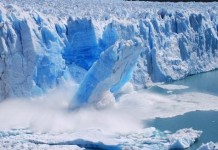 Whenever a new genre comes of age, when its time arrives, it signals a small yet significant shift in public awareness.
Whenever a new genre comes of age, when its time arrives, it signals a small yet significant shift in public awareness.
Before sci-fi arrived on the scene in the 1920s, via short stories in science fiction magazines that set the stage for future SF writers like Isaac Asimov and Harlen Corben and David Brin, the public in Europe and America was still living in the dark ages, it seems.
And now, with the rising new genre of “cli-fi” on the scene, a new kind of public awareness mirrors the dilemma humankind is in as climate change and man-made global warming put a new agenda on the table. Sci-fi gave birth to cli-fi in a way, and the real heroes of the new genre for both movies and novels will be the Hollywood directors and novelists themselves who will be doing the heavy lifting, telling their stories and giving shape to their visions.
In the end, the ”stories” they tell will be everything. While the many newspaper stories and academic papers about cli-fi are part of the background of this new genre, and while the university classrooms that are now taking to the cli-fi genre in a way students seem to appreciate are also telling, the real work will be done by the writers themselves, male and female, young and old.
What is important now about cli-fi are the coming cli fi novels and movies that will be written and released in the next 35 years, from 2015 to 2050. We need the real artists speaking in their cli-fi voices and with their cli-fi visions and cli-fi stories.
Newspaper columns and opeds about the “mushrooming genre of cli-fi,” as the New York Times put it a year ago, are just ”media backgrounders” to jumpstart the engines.
The real heroes, I feel, will be the writers, the movie directors. And their time is coming.
It takes a while before a genre evolves and reaches its audience, and before its storytellers gather enough steam to pitch their novels and movies to publishers and producers. The next 35 years will be pivotal, and literature and cinema will never be the same.
Who will these cli-fi ”heroes” be? Perhaps some of them are reading these words right now. That is my hope.
When I asked YA cli-fi novelist Kat Ross, author of “Some Fine Day,” about these issues, she told Teleread:
“As a journalist, I’d covered climate change issues for almost a decade, and every year, the warnings from scientists became increasingly dire. There seemed to be such a profound disconnect between what they–the smart people–were saying and what policy-makers were doing about it. So I wrote a story that asks: what if we did nothing until it was too late? What if the worst-case scenarios actually come to pass? ”
”In my YA novel, ‘Some Fine Day’, Earth’s surface is ravaged by continent-sized storms called hypercanes, which were actually first hypothesized by a meteorologist at MIT named Kerry Emanual. Although my book falls squarely into the cli-fi subgenre, I don’t use the phrase ‘climate change’ once. I didn’t think it was really necessary, and I didn’t want to distract from the story. The last thing anyone wants to read is a preachy “issue” book–unless of course you’ve gone out to buy one on purpose! That said, if someone reads the story and it makes them worry or even get mad at the politicians who are sitting on their asses, that’s sure okay by me too.”


































“Cli-fi” (an abomination of a name) isn’t a genre. It’s a subset of plain old science fiction/SF/sci-fi). It’s currently having a media heyday because everyone wants to be part of the current “trending” mindherd, Eventually, we can only hope, the name will fade into oblivion, and whatever worthwhile novels come out of it will take their place alongside the stories that were written about climate change and its consequences before it was a fad. Only the ignorant think that climate and environment in SF are something brand new.
We also have the Syfy Channel, yet another attempt to assert ‘special snowflake’ status with little more than diddling with nomenclature.
So, what makes Cli-Fy different from Sci-fi and does that difference warrant a genre to itself rather than sub-genre status?
“Cli-Fi” would be a subgenre of science fiction in the same way as paranormal romance is a subgenre of romance. In both subgenres, the plot structure and basic requirements follow the rules of the main genre with the difference being the subject matter.
As regards, the SyFy Channel, “si-fi” is the term of choice in fandom for media science fiction. “SF” is the preferred term for science fiction literature. The SyFy Channel used to be the SciFi channel, but for some reason I’ve never figured out, they rebranded themselves as the SyFy Channel.
@Catana, BRAVO! more or less: = where you said above — “Cli-fi” [is] a subset of plain old science fiction/SF/sci-fi. It’s currently having a media heyday …., Eventually, we can only hope ….whatever worthwhile novels come out of it will take their place alongside the stories that were written about climate change and its consequences before it was a [prt of a media heyday]. …Climate and environment in SF are [of course not] something brand new.”
UPDATE: Scott Thill, the former WIRED reporter and current HuffPo columnist who wrote essay titled “Cli Fi is Real” last fall, tells me this today re the above oped, his words: “Cli-fi creatives will have no choice but to analyze and explore their globally warmed, weirding world, which in turn was created by a much narrower, more narcissistic sci-fi. The exponentially transformed Earth will force their hearts and minds…”